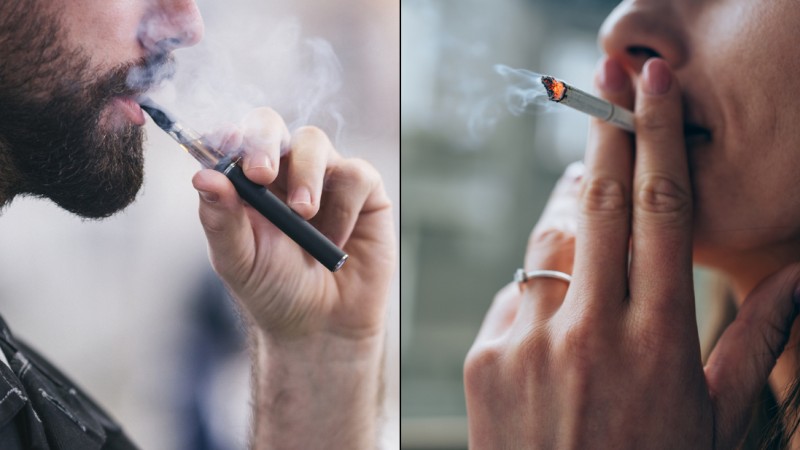Vaping in Canada
Is Vaping Better Than Smoking in Canada? A Detailed Look
Vaping has become a popular alternative to smoking in Canada, but many people still wonder: Is vaping better than smoking in Canada? Whether you’re a smoker looking to switch or just curious about the health effects and regulations, this article will break down everything you need to know.
Understanding the Difference Between Vaping and Smoking
Smoking involves burning tobacco, which releases thousands of chemicals, including harmful carcinogens like tar and carbon monoxide. These substances are known to cause serious health conditions such as lung disease, heart disease, and cancer.
Vaping, on the other hand, uses e-liquid that is heated to produce vapor instead of smoke. While vaping is not risk-free, it eliminates many of the harmful chemicals found in traditional cigarettes. The key ingredients in vape juice include:
- Vegetable Glycerin (VG) and Propylene Glycol (PG) – Used as a base to create vapor.
- Nicotine – Optional, but commonly included in various strengths.
- Flavorings – Provide different taste options for users.
Health Risks: Vaping vs. Smoking
1. Chemical Exposure
Smoking tobacco produces over 7,000 chemicals, with at least 70 known carcinogens. Vaping contains fewer toxic chemicals, making it a potentially safer alternative. According to studies, the level of harmful substances in e-cigarettes is significantly lower than in combustible tobacco.
2. Impact on Lung Health
- Smoking is a leading cause of lung cancer and chronic obstructive pulmonary disease (COPD).
- Vaping does not produce tar, which is one of the main culprits of lung damage in smokers. However, some concerns remain regarding the long-term effects of inhaling vaporized substances.
3. Heart Disease and Blood Circulation
- Smoking is directly linked to heart disease, high blood pressure, and reduced oxygen flow in the body.
- Vaping, while not completely risk-free, does not contain carbon monoxide, which contributes to heart disease in smokers.
Is Vaping a Good Way to Quit Smoking?
Many Canadians turn to vaping as a way to reduce or quit smoking. According to public health research, vaping is considered less harmful than smoking and can be an effective tool for quitting. Some key benefits include:
- Controlled Nicotine Intake: Vapers can gradually lower nicotine levels to ease withdrawal symptoms.
- Elimination of Harmful Tobacco Chemicals: Reducing exposure to tar and carcinogens benefits overall health.
- Improved Respiratory Function: Many former smokers report better lung capacity and stamina after switching to vaping.
Vaping Regulations in Canada
The Canadian government regulates vaping products to ensure safety. Some key laws include:
- Minimum Age Restriction: You must be 18 or 19 years old (depending on the province) to purchase vaping products.
- Nicotine Limits: The maximum nicotine concentration allowed in vape juice is 20mg/mL.
- Flavor Restrictions: Some provinces have banned flavored e-liquids due to concerns about youth appeal.
- Advertising and Promotion: There are strict rules on how vaping products can be marketed.
Cost Comparison: Vaping vs. Smoking in Canada
Smoking is significantly more expensive than vaping. Here’s a cost breakdown:
- Average Cost of Smoking: A pack of cigarettes in Canada costs around $15-$20. A daily smoker spends over $6,000 per year.
- Average Cost of Vaping: A starter kit costs between $30-$60, and e-liquid refills range from $15-$40 per month. The annual cost is roughly $500-$1,500, making vaping a cheaper alternative.
Common Myths About Vaping
1. “Vaping is just as harmful as smoking.”
While vaping is not completely risk-free, studies show it contains fewer harmful chemicals than traditional cigarettes.
2. “Vaping leads to smoking.”
Research indicates that most adult vapers are former smokers trying to quit, rather than new users switching to cigarettes.
3. “Secondhand vape is as dangerous as secondhand smoke.”
Unlike cigarette smoke, vape aerosols dissipate quickly and contain fewer toxins, reducing risks to bystanders.
FAQs About Vaping in Canada
1. Is vaping really better than smoking?
While vaping is not completely safe, it is considered a less harmful alternative to smoking because it removes many toxic chemicals found in cigarettes.
2. How much can I save by switching to vaping?
A pack-a-day smoker spends over $5,000 per year on cigarettes. By switching to a refillable vape, you could spend as little as $500–$1,500 per year, saving thousands.
3. Where can I buy vapes online in Canada?
For high-quality vapes and e-liquids at the best prices, visit EliteVapesCanada.com.
4. Is vaping allowed in public places?
Vaping laws vary by province, but in most areas, it is banned indoors and in places where smoking is prohibited.
5. What’s the best vape for quitting smoking?
Pod systems like STLTH and JUUL are great for beginners. Refillable vapes offer better cost savings in the long run.
Conclusion: Is Vaping a Better Choice in Canada?
While vaping is not risk-free, it is widely considered less harmful and more affordable than smoking. For Canadians looking to quit smoking, vaping could be a better alternative.
If you’re ready to make the switch, check out EliteVapesCanada.com for the best vaping products at competitive prices.

